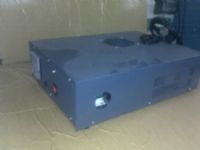The human ear can not hear those higher-pitched than the sound waves on average of 10-12 kHz. Ultrasounds are called sound signals that are above the human ear's hearing limit and are in the order of 20 kHz -100 kHz. Another meaning of this is in 1 second 20,000-100,000 vibrations.
Ultrasonic waves were first used in medical research and metal detectors in the years 1929-1935. It emerged in World War II as the use of submarine sonar devices with the principle of rapid advancement of sound waves in the water, reflecting back from the object they hit and returning to the source. Ultrasonic systems, developed in the early periods by the Japanese and Russians, were not well known and used in America and Europe until the 1950s. All research and development focused on the early days of medical studies, the Japanese developed Doppler ultrasound devices which are still in use today.
Since the 1980s, the idea of using ultrasound, especially in the industrial sector, has begun to develop rapidly and today a wide area of application where ultrasound waves are used has emerged. The use of ultrasonic waves is currently used mainly in medicine, measurement, area and distance determination, dental cleaning, jewelry cleaning, industrial finishing, industrial part cleaning, metal or plastic bonding, anti-bacterial effect, water treatment.It consists of a generator that produces waves and a transducer that converts this electrical signal into a mechanical signal (sound waves) and the transducers could not operate at temperatures higher than 80 degrees due to the material used. Thanks to alternative transducers, the Japanese-S system developed in the early 90s. Korea Partnership, this technology, previously used only up to 80 ° C, can now be used up to 200 ° C.



